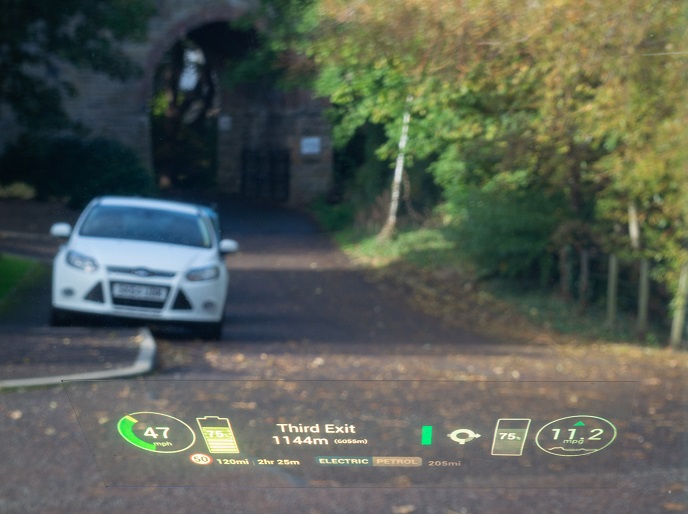Pioneering display technology keeps drivers focused on the road
Original equipment manufacturers (OEMs) in the automotive industry want to project key vehicle information just below the windshield, exactly where drivers need it – directly in their line of sight. This heads-up display(opens in new window) (HUD) system is popular, but the cost is prohibitive using the technology currently on the market. “Every major automotive OEM is in the process of developing or identifying new transparent display (TD) technology and HUD technologies that represent the next generation of information display in cars,” explains Fraser Myron, operations director at Ceres Holographics(opens in new window). Solutions based on conventional HUD optics cannot meet these market needs. Using available technology, a HUD projector system that covers a driver’s required field of view is too bulky for most vehicles. The EU-funded VIEW-AHEAD project, coordinated by Ceres Holographics, replaced standard technology with a photopolymer holographic optical element (HOE)(opens in new window) solution that is laminated inside the car windshield. The team produced a smaller HUD that fits in any vehicle.
Market hungry for volume HOE manufacturing
The market for HOEs is growing rapidly. “Success in any global mass market requires the relevant volumes to be delivered at an attractive price point and with surety of supply,” comments Myron. “Volume HOEs in automotive applications have always struggled to achieve economies of scale.” Manufacturing large quantities of HOEs will allow automotive manufacturers to commit to fitting high-performance TDs and HUDs in their entire range. However, this involves special equipment that is yet to be built. To produce HOEs in the capacity and format needed by the market, VIEW-AHEAD had to adapt existing replication machinery to work on a continuous roll-to-roll (R2R) basis. Then it could proceed with industrialising the HOE integration process.
Reliable, fast, high-quality replication
Project partners developed a continuous R2R holographic replication machine capable of copying master HOEs into blank film. It produces higher quality products more efficiently and in a larger configuration. The first successful lamination of a TD has been achieved with a single, full-size piece of HOE film for a windshield. The process meets requirements and is currently undergoing automotive testing by a leading OEM. The machine has been successfully demonstrated to key clients. For one of the lead customers, an OEM based in the United States, the TD system is undergoing final application readiness testing. The plan is to incorporate it into a production vehicle starting in 2026. “This OEM will have the first fully integrated holographic TD system in an automotive vehicle in the world,” states Myron. Several industry players also stand to benefit financially. European raw film suppliers, windshield interlayer manufacturers, glass laminators, and the tier 1 HUD and projector suppliers will all contribute to the complete system’s delivery. Today’s cars provide drivers with more information than ever, mostly through visual dashboard displays. VIEW-AHEAD’s innovation allows information to be overlaid exactly where it is needed for HUDs with a wide field of view. This helps to keep drivers’ attention on the road and more effectively notify them of potential hazards.





